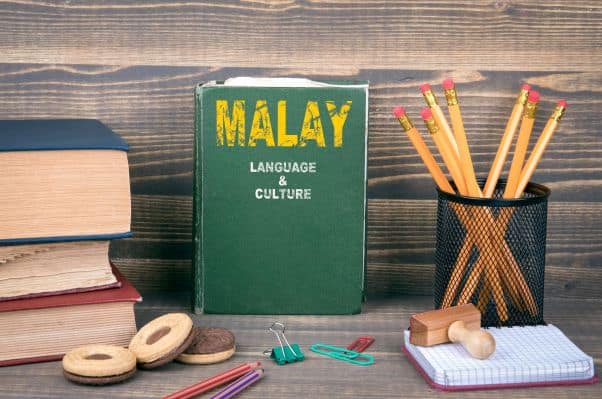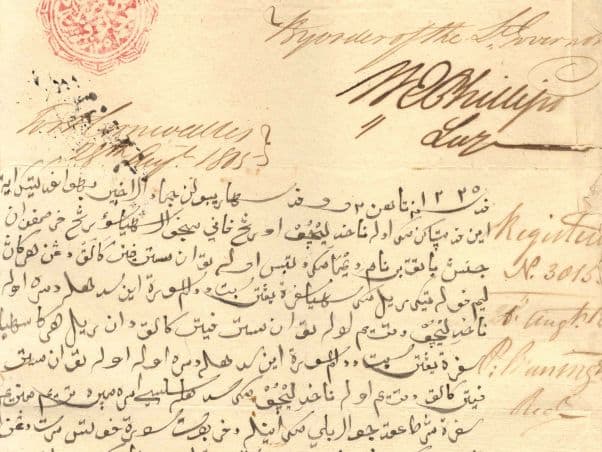Welcome to the Malay archipelago: a region of jam-packed cities and mega-diverse jungles, fast-growing economies and shopkeepers who you’ll call “auntie,” historic temples, soaring skyscrapers, powerful artwork, arcades you could get lost in, restaurants you would happily get lost in, and hundreds of languages and cultures living side-by-side – sometimes with friction, but mostly happily.
Learn Malay with this comprehensive guide and explore history, grammar, vocabulary, resources, tips, and answers to language learning FAQs here. Dive in.
Malay is just two (yes, two!) of these languages. But whether you’re speaking bahasa Melayu or bahasa Indonesia, you’ll find that it unlocks smiles and lets you hold conversations with complete strangers through to friends’ families.
Before you start creating word lists and searching for tutors, let’s take a look at the Malay apps, courses, and textbooks you might like to use, as well as what sets the Malay language apart and how to create your study plan.

About the Malay Language
There were around 200–250 million speakers of Malay in 2009, according to the linguist James T. Collins’ research. And that figure has likely increased over the past 11 years, due to growing population sizes.
Yet if you disregard all the people who speak Malay as a second language, this number drops to just 77 million. And if you then remove Indonesian from the category, and look at just native speakers of bahasa Melayu, you’re left with just 19 million speakers spread across Malaysia, Singapore, and Brunei.
Much like how millions of non-native speakers use English to communicate, people on the Malay peninsula use Malay to communicate with people from other communities and ethnic groups – even when it’s not the first language of anyone in the room.
It’s heavily influenced by Sanskrit and Arabic, while early modern colonialism introduced English and Dutch loanwords. And Tamil and Chinese traders also shaped Bazaar Malay or Baba Malay, a pidgin language that later evolved into modern-day Indonesian.
But wait, why do we keep talking about Indonesians?

Indonesian vs Malay: What’s the Difference?
Modern-day Malay can be separated into two variants: bahasa Melayu and bahasa Indonesia.
Bahasa Melayu is spoken in Malaysia, Singapore, Brunei, and to a lesser extent, Indonesia. In Malaysia, it’s called bahasa Malaysia (which is controversial, given that not all Malaysians speak it).
Bahasa Indonesia, on the other hand, is spoken only in Indonesia, where it’s the lingua franca for a country with over 300 ethnic groups and, or so it’s estimated, over 700 languages. That means that Malay Indonesians will speak bahasa Melayu at home but bahasa Indonesia with people from other communities.
Wondering why they all begin with “bahasa?” That’s because it means language.
These two Malay variants are considered mutually intelligible. Yet while most bahasa Indonesia speakers will get the gist of what you’re saying if you speak to them in bahasa Melayu, there are significant differences, especially in the spelling, pronunciation, and loan words.
Rather dangerously, there are also a few false friends, such as percuma, which means “free” in bahasa Melayu but “useless” in bahasa Indonesia. And a handful of R-rated ones could lead to even greater offence than if you were to accidentally describe someone’s generously given free help as useless.
To understand why these two languages are so close and yet so different, we need to look at the region’s colonial history.
For a grand part of their past, Indonesia and Malaysia were in the same empire or even kingdom. The Malacca Sultanate of the 14th to 16th century, for example, straddled the two islands. So too did the 16th–18th-century Aceh Sultanate.
However, as various European empires began colonizing the region, the two islands found themselves divided between different colonial powers: Indonesia ended up under Dutch rule, while what is today Malaysia and Singapore became part of the British Empire – although not until after the British and Dutch had squabbled over who ruled Singapore. Meanwhile, Brunei became a British protectorate in 1888.

The British and Dutch colonizers found themselves ruling over people who not only spoke an unfamiliar language but wrote it with a different script: jawi. In response, they both independently set about finding a way to write Malay with the Latin alphabet. This led to the spelling differences between bahasa Melayu and bahasa Indonesia.
They also imported different loanwords. Christmas, for example, is krismas in bahasa Melayu but Natal in bahasa Indonesia. Money is duit in bahasa Indonesia, from the copper Dutch coin, but wang in bahasa Melayu.
While these variations are equally valid and important, we’ve focused on resources for learning bahasa Melayu. This isn’t to disregard the existence of bahasa Indonesia, but rather a reflection of the differences and the fact that most language learners describe it as Indonesian rather than Malay.

Extract from the Malay-language record of the 1805 sale of an indigenous Batak female slave called Dima to Mr. Peter Clark under British imperialist rule. Public Domain.
Jawi and Rumi: The Two Writing Scripts of Malay
Today, most people write Malay in Rumi, which is the same Latin script we use in English. But in certain places, especially in Brunei and rural Malaysia, you’ll come across signs saying تريما کاسيه instead of terima kasih, or “thank you.”
Malay was originally written in a variety of scripts. There was Pallava, which originates from Southern India and has since evolved into Khmer, Thai, Lao, and many more Southeast Asian scripts. There was also Devanāgarī, an Indian script that was also used to write Sanskrit, Hindi, Marathia, and more. Kawi and Rencong, both of which originate in Indonesia, were also common.
Yet with the peaceful spread of Islam across the region, these alphabets fell out of fashion and were replaced with Arabic. Over time, a new script, Jawi, developed that included the characters ڽ ڬ ﭪ ڠڠ . These were needed to represent phonemes found in Malay and other Southeast Asian languages.
The earliest discovered evidence of Jawi dates to the beginning of the 14th century, and the writing system is still in use today. It is a co-official script in Brunei, where both Malay and English are official languages.
There is also a government drive to increase its use across Malaysia. However, not all are in favour of this, especially given Malaysia’s multilingualism and Jawi’s close association with Islam. When the government tried to make studying khat, Jawi calligraphy, mandatory in primary education, it had to back down after fierce opposition – especially among Chinese and Tamil schools.
Meanwhile, in Singapore and Indonesia, the Latin alphabet is the official one.
You won’t need to learn Jawi to communicate in Malay, but you might like to, especially if you plan to live or travel in Brunei or Malaysia. We’ve included resources for how to learn it below, so keep reading.

How Difficult Is Malay?
Relax. Compared to other Southeast Asian languages, Malay is a fairly accessible language. The US Foreign Service Institute considers it one of the 15 easiest languages for English speakers to pick up, putting it roughly in line with German.
Saying it’s like German, however, is a tad misleading: for English speakers, German has a more complex grammar system but similar vocabulary. Malay, however, has a completely different vocabulary but a more straightforward grammar system.
Of course, this is relative and will depend on what you’ve studied before. But let’s look at some characteristics of Malay: like English, there are no noun cases and it’s not a tonal language. Unlike English, the pronunciation is fairly regular.
There is no grammatical gender. You can say “she studies Malay in school,” but neither Malay nor the school is feminine or masculine.
There is normally no copula, i.e. “to be,” something that will seem familiar to Japanese and Russian students. Saya means “I,” pelajar means “student,” and saya pelajar means “I am a student.”
Talking about plural things, e.g. “chairs” rather than “a chair?” You can either keep it ambiguous and use the same word (a chair, kerusi), specify how many (five chairs, lima kerusi), or just make it clear that there’s more than one by repeating the word (kerusi-kerusi), depending on how precise you want to be. Either way, you won’t need to learn new vocabulary or rules about pluralizing adjectives.
You probably also noticed that “a chair” is two words in English but one in Malay. That’s because there’s no definite or indefinite article (the, a, an). There are demonstrative pronouns (that, this, those, these…) but only two of them, ini and itu.

On the other hand, counting is a little more difficult due to the use of classifiers. Five chairs might be “lima kerusi” but five cats are lima ekor kucing or “five – animal counter – cat” and five oranges are lima biji oren or “five – small, round object counter – orange.” Yet while this might seem novel to begin with, it won’t take long to pick it up.
The verb conjugation is much easier, with the past, present, and future indicated not by changes to the word’s spelling and pronunciation but by adverbs and modal verbs – the equivalent of “will,” “later,” and “already.” Instead of memorizing conjugation tables and irregular verbs, you’ll just need to master a handful of words to begin differentiating between what you did at the weekend and what you’ll do next weekend.
Malay also makes heavy use of affixes, which means you can expand your vocabulary pretty quickly. Plus, it will help you out with your listening and reading: once you’ve learned to recognize the affixes, you won’t have to keep reaching for a dictionary.
For example, a pe or pen prefix turns a verb or noun into a person, e.g. a penjual is a vendor, someone who sells (jual) things. Meanwhile, kedai means shop and pekedai is a shopkeeper. Alternatively, combining the prefix “ke” and the suffix “ken” converts nouns into adjectives, and the ter prefix makes an adjective superlative, e.g. termahal means the most expensive (mahal).
However, there is one thing that can catch Malay language learners out: the different dialects and slang. In Malaysia alone, there are 137 different languages and 30 native tribes, which results in variations on the standard bahasa Malaysia. Switching between them can add layers of additional meaning.
Don’t worry too much, because you’ll always be understood by native speakers – but as a learner, you might find yourself saying saya tidak faham, “I don’t understand,” when you first meet people from other regions.

Is Malay Easy to Learn?
The best way to learn Malay will depend on you. What are your goals? What do you like to do? How much time do you have?
Once you’ve worked that out, you can start creating a study plan – one that hopefully gives you time to work on reading, writing, speaking, listening, vocabulary, and grammar.
Given the large number of dialects and variants, you’ll also want to decide which type of Malay you’re going to learn. Most apps, courses, and textbooks will teach you standard bahasa Melayu, and for travelers and businesspeople, this might be the best option. However, if you’re planning a move to a specific location, such as Kuala Lumpur, Brunei, or Penang, you might want to also practice with vloggers, podcasts, and language exchanges with people from that area. This will help you get used to the local dialect quicker.
Malay’s accessible grammar system means it won’t take you too long to be able to create your own sentences. Start journaling to expand your vocabulary, improve your word recall, and reinforce the grammatical structures you’re learning.

Memorize vocabulary and affixes with flashcards and quizzes. While there are plenty of word lists online, consider creating additional ones about your interests, work, and experiences. After all, that’s probably what you’ll talk about in the most detail.
Radio, music, podcasts, TV… there are numerous ways to work on your listening. We’ve given a few recommendations in our resource sections, as well as ideas for reading in Malay.
As for speaking, this will be pretty easy if you live in a Malay-speaking area but might be challenging if you’re studying it as a foreign language. Check out our tips for finding online tutors and language exchanges below, and in the worst of cases, record yourself speaking at home. It might not help with your response time, but it will improve your spoken fluency and word recall.
Try to study frequently. A little every day is far more effective than three hours every Sunday.
Above all, have patience with yourself. Learning a language, even one that’s considered relatively easy takes time and can be frustrating. Progress might feel invisible, while it’s easy to forget words you knew last month. Yet as long as you keep studying, you will improve.
And if you ever get too demotivated, just go back to a task you did a few months earlier. You’ll be surprised by how easy it suddenly seems.

Best Way to Learn Malay
Flashcards are a powerful tool for learning Malay vocabulary due to their ability to foster active engagement and efficient memory retention. By prompting learners to actively recall words and concepts, flashcards stimulate the retrieval process, strengthening the connection between the learner and the vocabulary. The repetition and review facilitated by flashcards provide a systematic approach to reinforcing words, moving them from short-term to long-term memory. Their portability allows for convenient on-the-go learning, making the most of spare moments for quick vocabulary review.
Furthermore, flashcards can be personalized to suit individual preferences, incorporating visual cues and examples to enhance understanding. The engagement, versatility, and motivation they provide contribute to a dynamic and effective vocabulary learning experience.
Easiest Way to Learn Malay
The easiest way to learn Malay often involves building user-friendly language apps, such as Duolingo or Memrise, into your routine. These apps offer structured lessons, quizzes, and interactive exercises. Actively engage with native Malay speakers through language exchange programs, either in person or online, to hone your conversational skills and receive real-time feedback.
Immerse yourself in Malay media, exploring movies, TV shows, and music, to familiarize yourself with colloquial expressions and cultural nuances. This multifaceted approach, combining technology, social interaction, and authentic content, ensures a well-rounded and enjoyable learning experience, making the acquisition of Malay more intuitive and effective.
How Long Does it Take to Learn Malay?
On average, it takes 900 hours to learn Malay. So if you’re learning full time (40 hours per week) you can be proficient in as few as 23 weeks. If you’re not looking for fluency, but you’re more concerned about having a conversation, you could achieve that in three months by concentrating on your speaking.
However, learning Malay is less about the number of hours you spend and more about what you do with those hours.
How to Learn Malay Fast
To accelerate your Malay learning, prioritize dedicated study periods where you delve deeply into the language’s intricacies. Leverage language-learning apps, such as Duolingo or Babbel, for interactive exercises that reinforce vocabulary and grammar. Immerse yourself in Malay media, including movies, TV shows, and music, to familiarize yourself with authentic language usage.
Actively engage in language exchange programs, seeking conversations with native Malay speakers to enhance practical communication skills. Consistency is paramount; commit to daily practice sessions. Establish clear learning objectives to guide your progress and expedite your journey toward proficiency in the Malay language.
How to Speak Malay
To speak Malay, start by learning basic phrases and practicing pronunciation. Engage in conversations with native speakers or language exchange partners. Regularly practice speaking Malay aloud, even if you’re initially making mistakes. Malay has a system of 8 different vowel sounds (with each sound having both a long and short form) which can be difficult for learners to get used to and can make speaking intimidating. So when speaking Malay, pay attention to your vowel sounds so you don’t accidentally say “camp” when you mean “you”.
Immersing yourself in Malay-speaking environments or using language apps for interactive exercises can further enhance your speaking skills.
Additional Malay Learning Resources
Consider adding a few more supplementary resources as you learn Malay. Some of these include Malay literature, music, and news.
Malay Textbooks and Reference Books
With its clear explanations, Malay for Everyone is a good base for learning Malay grammar and vocabulary. Every chapter contains exercises, but there are only a few sample dialogues throughout the book.
Complete Malay: A Teach Yourself Guide is well-loved by language learners, although the audio files have some incompatibility issues with the Kindle app. We recommend purchasing the paperback copy.If you like the Colloquial Malay audio course series in the Podcast section, try pairing it with the Routledge textbook.
Alternatively, Write Malay is dense but has plenty of examples and exercises to work through.
Skip Teach Yourself Malay: A Complete Course: it’s poorly structured and contains errors, which adds up to a frustrating experience. Meanwhile, you might find Malay Made Easy in a second-hand bookstore. The problem is that many of its editions are filled with incredibly dated language. Want an insight into colonial-era Malaysia? Give it a read. Otherwise, we suggest avoiding this one.

Malay Fiction Books and Poetry
Given the multilingualism of the Malay peninsular, it can sometimes be hard to find modern books that were originally written in Malay rather than English, Chinese, or one of the many other widely spoken languages in the region. Bernice Chauly, for example, is one of Malaysia’s award-winning and most influential contemporary writers, yet even her books and poems about her country are yet to be translated into Malay.
Yet while you have more limited choices, you can still find compelling Malay literature – whether you’re looking for an action-packed page-turner or a poignant novel that will change the way you view the world.
In Singapore, Malay authors often wrote in English to avoid being labeled as Malaysian and so denied their cultural identity. Yet Isa Kamari and Suratman Markasan have earned their place as leaders of the Malay-language Singaporean literary scene.
Although you’ll probably have to read his work in bahasa Indonesia, Pramoedya Ananta Toer is a must-read. He created his most celebrated novels, the Buru Quartet, as a political prisoner, narrating them to his fellow inmates who helped him record the story and smuggle it out. While this series focuses on the Dutch colonization of Indonesia, his books are also praised for their representations of women and Chinese Indonesian people.

Bruneian writers are less well-known, both in and outside of the country. However, the country continues to produce prize-worthy literature in English and Malay. Try Hajah Norsiah binti Haji Abdul Gapar, whose novels Pengabdian and Anji kepada Inah won awards. She also received the S.E.A. Write Award in 2009.
And if you’re looking for Malaysian Malay-language writers, you’ve got several to choose from. Ramlee Awang Murshid is a prolific author whose books have won awards and some have been made into movies. His novels tend to be fantasy, adventure, historical, or some blend of the three, and are often described as “thrilling.”
Emy Roberto’s novels focus on relationships: what happens when marriages are unhappy, or a pregnancy is unwanted? Her relationship-oriented novellas will teach you plenty of useful, modern vocabulary.
If you’re struggling to buy some of these books from abroad, you can read plenty of Malay Pantun, a traditional poetic form, online. You can find some here. And if poetry’s not to your taste, try reading these children’s books.

Other Resources, from Malay Dictionaries to News Sites
Listening to Malay singers will help you pick up vocabulary. Pop lovers could listen to Siti Nurhaliza, Yuna, and Ning, while Hujan is a popular indie rock band.
Stay up to date on current affairs and improve your Malay vocabulary at the same time by reading the news. For Malaysian news, try Berita Harian, Astro Awani, and Malaysia Kini. Alternatively, if you prefer the radio to a news site, try the All Malaysian Radios FM app.
Most Indonesian news sites are in bahasa Indonesia rather than bahasa Melayu, but the good news is that you have a lot of options. Try Jawa Pos and Kompas, which are some of the largest papers.
Berita Harian is a Malay-language Singaporean news site. For a Bruneian perspective, you’ll want to read Media Permata.
That being said, given the widespread self-censorship, harsh punishments, and generally limited press freedom in Indonesia, Brunei, and Singapore, you might want to combine these sources with international news for a more balanced perspective. (Malaysia has historically had similarly poor press freedom, but there has been a dramatic decrease in journalist harassment and self-censorship over the past couple of years.)
Of course, with all this immersive reading and listening, you’re bound to come across unfamiliar words. Look them up in MalayCube, a Malay–English dictionary, and thesaurus combined. You can also search for English words in the Cambridge English–Malay Dictionary, but you won’t be able to check the meaning of Malay ones.
Although Malay pronunciation is relatively straightforward, you can also use the pronunciation dictionary Forvo to check how to say specific words.

Just like how there are more Malay speakers than you might think, there are also far more resources available to you. And with its relatively accessible grammar and pronunciation, it’s a rewarding language to study.
So, what are you waiting for? Download some of the apps and podcasts, try out the courses and movies, and begin learning how to speak Malay. Boleh!

